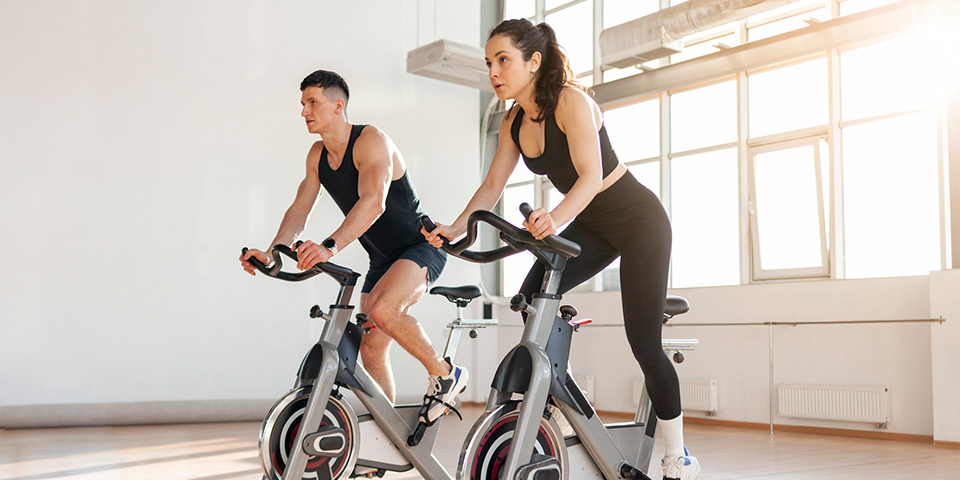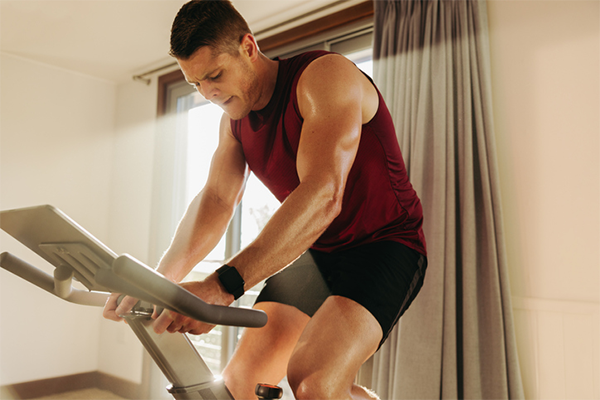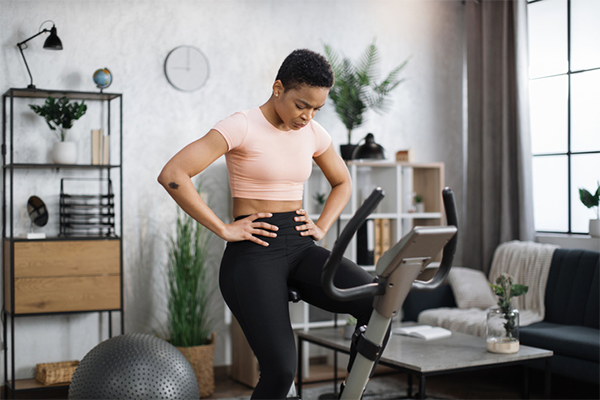Why Cycling Cadence Matters and How to Improve It

Whether you’re an elite cyclist or a recreational rider who’s just in it for the health benefits, you’ve probably questioned your cycling cadence and overall efficiency on the bike.
Should you be pedaling faster? Could you be cycling more efficiently? And what is a “good” cadence for cycling, exactly? We spoke with experts to find out.
What Is Cadence in Cycling?
“Cadence is simply the speed at which you pedal,” says Miriam Alicea, NASM-CPT.
Cycling cadence is measured in revolutions per minute (RPM), or how many times your feet completely turn the pedals in one minute.
So, if you’re cycling at a cadence of 90 RPM, you’re turning the pedals 90 times in one minute.
What Is a Good Cycling Cadence?
There’s no objectively “good” or “bad” cadence for cycling. “An optimal cadence is totally dependent on the individual and on the focus of the ride,” Alicea says.
Most indoor cycling classes use a range of 60 to 110 RPM.
Workouts that focus on pedaling at a slower cadence (60 to 80 RPM) are considered “climbs.” Also referred to as “big gear work,” these rides employ heavier resistance and, therefore, help to develop muscular strength and power.
Workouts that move at a faster clip may use less resistance and focus on a cadence of 80 to 110 RPM. Cycling at a higher cadence can help improve speed and coordination.
Bottom line: A good cadence for cycling is one that aligns with the purpose of the workout. Most cycling instructors will provide guidance throughout the class regarding appropriate resistance levels and cadence.
How Do You Determine Your Cycling Cadence?
Most indoor stationary bikes, like the BODi Bike by MYX, include a cadence sensor or built-in computer that can measure and track your cadence as you cycle. Cadence sensors can also be attached to the crank arm of a bike or worn on cycling shoes.
If you don’t have access to a cadence sensor, you can still measure your cadence with a basic stopwatch or the timer on your phone, says Todd Buckingham, PhD, professor of exercise science at Grand Valley State University.
Once you start the timer, Buckingham says, you have a few options:
- Count the number of pedal strokes in one minute to give you exactly how many RPM you’re pedaling at.
- Count the number of pedal strokes in 30 seconds and multiply by 2.
- Count the number of pedal strokes in 15 seconds and multiply by 4.
You can start counting pedal strokes when your foot is anywhere in its revolution, Buckingham adds, but it’s usually easiest to count when the foot is at the top or bottom of the pedal stroke.
4 Tips to Improve Your Cycling Cadence
Improving your cadence is a matter of optimizing your cycling efficiency. Here are a few tips for getting the most out of every moment on the bike, whether you’re doing a climb, HIIT workout, or recovery ride.
1. Ensure proper bike setup
“Your bike set-up is a huge piece in allowing for smooth riding,” Alicea says. “The proper saddle and handlebar height will allow your muscles to be in the optimal position for efficient pedal strokes.”
Adjust your seat so it’s level with your hip bone when you stand next to the bike. At the bottom of your pedal stroke, your knee should be just slightly bent, not completely extended. When sitting on the bike with your feet in the pedals, holding the handlebars, the kneecap of your extended leg should align with the tips of your toes.
Your handlebars should be at a height that allows for you to sit with a long, neutral spine.
2. Mix up your rides
“Practice will help improve your efficiency on the bike,” Alicea says. But be sure to vary your training with plenty of different types of rides, as they each offer unique benefits.
“Interval training drills, for instance, are a great way of teaching your body to work at higher cadence ranges,” Alicea adds, “while endurance drills will allow your body to sustain specific cadences for prolonged periods, helping increase time to fatigue.”
3. Try the one-leg drill
Buckingham suggests the one-leg drill to help improve the power and efficiency of each individual pedal stroke.
To perform this drill, you’ll need cycling shoes that clip into your pedals. Clip into just one pedal, and move the other foot to the side and out of the way. Pedal with one leg for a brief interval (30 to 60 seconds), then switch legs.
Pedaling with just one leg “will force you to have good form throughout the entire pedal stroke and not just the ‘down’ movement that most people focus on,” Buckingham says.
“If you picture the pedal stroke like a clock, the 1:00 to 5:00 ‘time zone’ is where most people push and put out power,” Buckingham explains. “Pedaling with one foot forces your leg to work in the entire circle of the clock so that you’re pushing down and pulling up. This will help make your pedal stroke more efficient and powerful.”
4. Incorporate strength and mobility training
What you do off the bike can have just as much of an impact on your cycling efficiency as what you do on the bike.
“Your leg muscles, especially the quads and hamstrings, are all working together to produce smooth movement,” Alicea says. “Having a good strength training program focusing on strength, mobility, and flexibility — along with development of the core, back, and legs — will serve as a great foundation.”
Resistance training, yoga, and Pilates are all complementary workouts that will balance out your training and help you become a stronger, more efficient cyclist.







